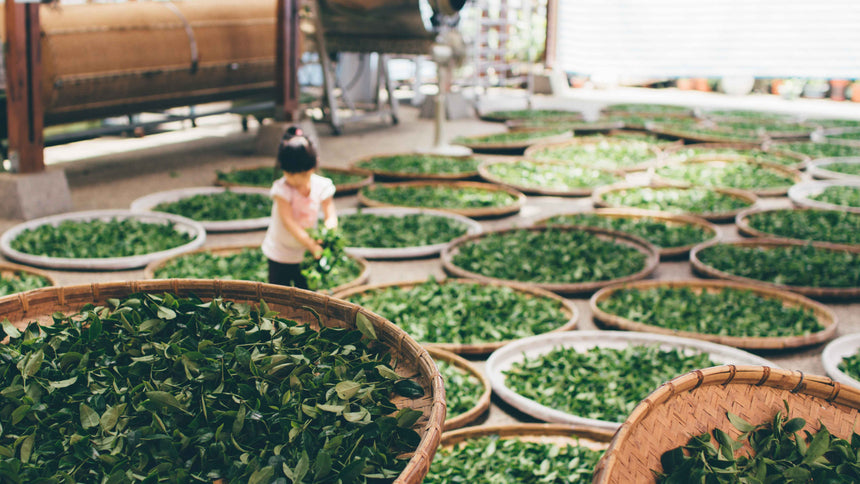What is Oolong Tea?
Oolong teas are teas that undergo partial oxidation before being twisted or rolled. Because the degree of oxidation is varied, the finished tea varies in appearance, ranging in color from rich chestnut brown to greenish-gray. Not like Black Tea (with 100% oxidation) and Green Tea (0% oxidation), this level of variation requires more steps involved in the manufacturing.
What’s oxidation and how the process might look like?
Oxidation is a chemical process that makes the flavor achieved in the final product. Oxidation officially begins during the withering stage while spreading the tea leaf in a single layer, either outdoors or indoors, on a mat. While exposing the tea leaves to moist and oxygen-rich air, the color of tea leaves transits from green to red depending on their level of oxidation.
In order to accelerate this process, leaves are often rolled or crushed to expose more of them to the air, resulting in faster oxidation. Once reaching the expected oxidation degree, the firing (kill-green) step is the point to stop oxidation by exposing the tea leaves to a small degree of heat to remove excess moisture.
Different oolong teas have different oxidation levels

Oolong teas have a wide variety of different flavor characteristics depending on their level of oxidation. In our collection, Four Springs and Milk Oolong are lightly-oxidized (10~15%), leaving a more fresh and bright taste. Orchid Oolong and Iron Goddess are medium-oxidized (20~40%). Oriental Beauty is heavily-oxidized (50-60%), offering a more earthy and deep taste.

